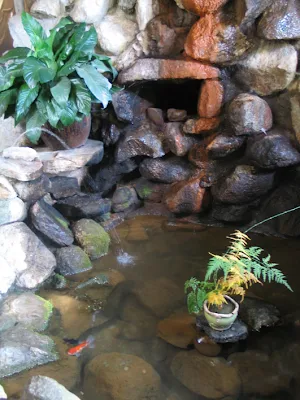The following selections are about environmental issues. If video at youtube is available, I will link to it here for the convenience of review. It is important that teachers actually listen to the lyrics and make educated decisions concerning their own classrooms. Just because the songs have been included here, that does not mean that all of them are "age appropriate" for every student! Be selective and have some fun making your own list for my environmental art lesson.
- “Big Yellow Taxi” by Joni Mitchell
- “Fresh Garbage” by Spirit
- Bo Diddley “Pollution” from 1971
- “Earth Song” by Michael Jackson
- “Zone 804” by Peter Schilling
- “Inner Revolution” by Adrian Belew
- “Nature’s Way” by Spirit
- “Godzilla” by Blue Oyster Cult
- Julian Lennon’s “Saltwater” 1993
- “My City Was Gone” by The Pretenders
- “Black Moon” by Emerson, Lake & Palmer
- “Traffic Jam” by James Taylor
- “Calling Around the World” by Thomas Donovan
- “Mercy Mercy Me (The Ecology)” by Marvin Gaye
- “Calypso” by John Denver
- “We Bought It” by Brother Tree
- “When the North Pole Melts” by Captain Sea Level
- “Prelude / Nothing To Hide” by Spirit
- “Wond’ring Again” by Jethro Tull
- “I Am the Earth” by Goose Creek Symphony
- “Shapes of Things” by The Yardbirds
- “Rain on the Scarecrow” by John Cougar Mellencamp
- “One Sweet World” by Dave Matthews Band
- “Plan It Earth” by Richard Sinclair
- “Sweet Baby James” by James Taylor
- “Clear Blue Skies” by Crosby, Stills, Nash & Young
- “Coal Tattoo” by The Kingston Trio
- “Recycled” by Nektar
- “The Sun Is Burning” by Simon & Garfunkel
- “Oxygen” by Goose Creek Symphony
- “Only A Dream” by Adrian Belew
- “Good Planets Are Hard To Find” by Steve Forbert
- “Subdivisions” by Rush
- “The 3 Rs (Reduce, Reuse and Recycle)” by Jack Johnson (Great for little kids too!)
- “Supernova” by Liquid Blue
- “The Trees” by Rush
- “Crystal Blue Persuasion” by Tommy James and the Shondells
- “Death of Mother Nature Suite” by Kansas
- “How Is It” by The Moody Blues
- “Slower Than Guns” by Iron Butterfly
- “Doctor My Eyes” by Jackson Browne
- “In The Year 2525” by Zager & Evans
- “Don’t Go Near The Water” by The Beach Boys
- “Earth Anthem” by The Turtles
- “Earth Day Every Day (Celebrate)” by John Denver
- "Goodbye To A River" by Don Henley
- "Hey You" - Madonna
- "Dragonfly" - Ziggy Marley (language)
- "Song For A Dying Planet" - Joe Walsh
- "Silent Ruin" - Olivia Newton-John
- "The Eagle And The Hawk" by John Denver
- "To The Last Whale: a) A Critical Mass b) Wind On The Water" - Crosby & Nash
- "Ecology Song" by Stephen Stills
- "Cold Cup Of Water" by Pat Humphries
- "Cement Octopus" by Pete Seeger
- "Don't Go Near The Water" by Johnny Cash
- "Last Lonely Eagle" by New Riders Of The Purple Sage
- "A Day in the Life" by The Beatles
- "All the People" by Dyniss
- "Atlantis" by Donovan
- "Blue Sky Mine" by Midnight Oil
- "Deep Peace" by Donovan
- "Earth and Sun and Moon" by Midnight Oil
- "God Bless My SUV" by Capitol Steps
- "Piggies" by The Beatles
- "Seven Stones" by Genesis
- "Sun is Still Shining" by The Moody Blues
- "The Day Begins" by The Moody Blues
- "Warakurna" by Midnight Oil
- "Why Dream" by Focus
- "Wolves of Lamar Valley" by Chuck Cheesman
- Moody Blues, “Om”
- Stevie Wonder, “Saturn”
- Tower of Power, “Only So Much Oil In The Ground”
- "A Gallon of Gas" by The Kinks
- "Dirty Business" by New Riders Of The Purple Sage
- "Apeman" by The Kinks
- "Poison In The Well" by 10,000 Maniacs
- "Men In Helicopters v4.0" by Adrian Belew
- "I'd Love To Change The World" by Ten Years After
- "Don't Kill The Whale" by Yes
- "Vapor Trail" by Rush
- "Underground" by Wishbone Ash
- "(Nothing But) Flowers" by Talking Heads
- "The Last Resort" by Eagles
- "Pass It On Down" by Alabama
- "Garden Of Eden" by New Riders Of The Purple Sage



































